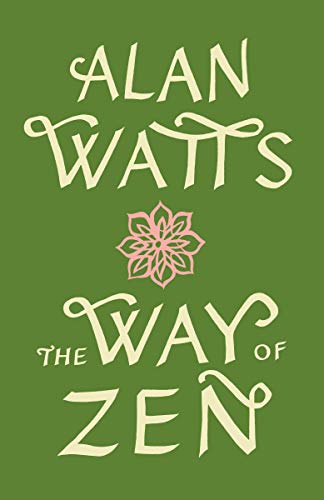The Way of Zen

Did you hear the one about the Zen Buddhist who ordered from a hot dog vendor? He said, “Make me one with everything.” All (bad) jokes aside, Zen is something that many people have heard about but few understand. The Way of Zen is a classic book (1957) that brought awareness of Zen to the Western world. I first noticed it through a reference in Happier?, but it’s come up numerous times. As I was reading it, I was constantly reflecting on a more contemporary version in the form of Trying Not to Try.
Religion, Philosophy, or Other
In A Force for Good, the Dalai Lama explains that he isn’t concerned whether Buddhism is a religion or a philosophy. Watts, in The Way of Zen, describes Zen as neither religion nor philosophy. It’s neither psychology nor science. Zen, he proposes, sits outside the bounds that the Western world tries to put around it.
Describing something that can’t be placed easily into a category isn’t easy. This is particularly the case when the thing is about the present moment – and its fleeting nature. Often, the responses of masters to students are non sequitur on purpose. The approach is that Zen can’t be taught but rather caught or discovered on one’s own. To obtain the nirvana that one seeks, one must not seek it. (See Happiness for an example in the Hindu goddess of wealth.)
Wu-Wei
The reference to Trying Not to Try comes from the focus on the language at the heart of it. Wu-wei is described by Watts as “not-making.” It’s clearly the same concept. It’s the same pull between different poles of a continuum. Attributed to Tao, one of the roots from which Zen springs, Watts explains that there’s a sort of natural evolution or growth that’s implied in a way that the Judeo-Christian God doesn’t align with in the mechanical creation beliefs.
Reincarnation All the Time
What if the thoughts of reincarnation didn’t focus on the evolution of life and death in the sense of a human’s life, but rather referred to the death of each moment and the rebirth in the next? It’s an interesting twist on the belief in reincarnation that makes sense in terms of advancing – or retracting – one’s status. The more you invest and create positive energy around the current moment, the more the next moment will be better.
Nirvana
Thought of as the escape from the cycle of reincarnation (and suffering), Nirvana is a state that can reportedly only be accessed unintentionally, and spontaneously after the self-grasping has been accepted. Self-grasping is our desire to know ourselves – and understand ourselves. We’ve got to find peace and calm there before moving on to accept the nature of the universe.
It requires acceptance of quiet contemplation as action. A willingness to be quiet and to use that quiet to consider how to best help is an important activity in and of itself.
Reality as a Projection
One view of reality is that it doesn’t exist at all – that it is instead a projection of our mind. There may be something to that from the perspective of neuroscience. Incognito thoroughly exposes how we fill in missing details in ways that we perceive as real but are verifiably not. Most of us accept that reality is as we perceive it, but the more that we learn about the world, the less certain we can be that anything we perceive is “really real.” Consider our perception of the solid ground on which we stand or sit or lay. We know that there are, in fact, a number of spaces between the molecules and atoms that make up whatever it is that we believe we’re standing on.
Ultimately, Zen is about the effortless acceptance of moment-to-moment, realizing that nothing is permanent and nothing is as it seems – that is The Way of Zen.
